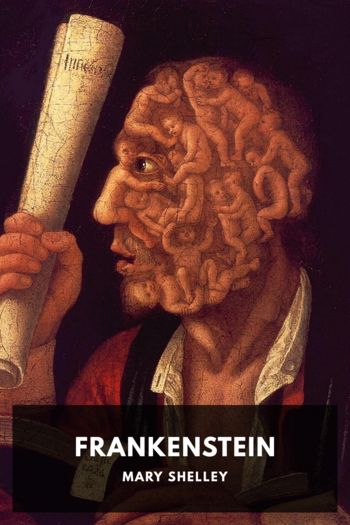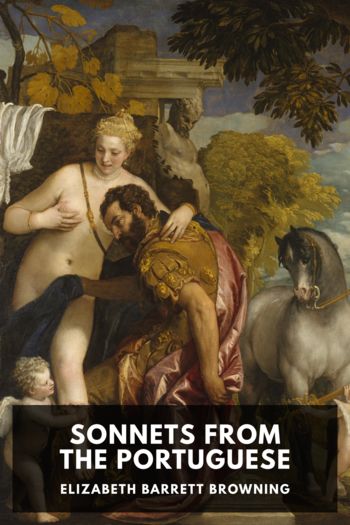Two-Way Mirror, Fiona Sampson [children's ebooks online .txt] 📗

- Author: Fiona Sampson
Book online «Two-Way Mirror, Fiona Sampson [children's ebooks online .txt] 📗». Author Fiona Sampson
Elizabeth is becoming more forceful in general. By April 1846, after more than a year of Browning idealism, she understands the British Empire as a violent aberration. The horrifying loss of life in the First Sikh War, concluded the previous month by the Battle of Sobraon, which killed 320 Brits but 10,000 Sikhs, shows her conclusively that empire subjugates rather than ‘civilizes’. She takes this insight and runs:
Some of these days our ‘great Indian Empire’ will stand up on its own legs, & make use of our own rope to scourge us to a distance. What right has England to an Indian empire? No more than the Duke of Sutherland, to his broad estates. Wait a little, & we shall see it all arranged according to a better justice, on the small scale & the large.
To foresee independence, and how subjugation itself will power the liberation struggle, is all the more remarkable because Elizabeth is writing two years before Karl Marx and Friedrich Engels will publish their theory of revolution in The Communist Manifesto, and indeed seventy before Vladimir Lenin’s Imperialism, the Highest Stage of Capitalism – not to mention the powerful postcolonial critique the latter will go on to unlock in Frantz Fanon’s The Wretched of the Earth (1961), Edward Said’s Orientalism (1978) and beyond. None of this thinking has happened yet. In London in 1846 abolitionism is popular; anti-imperialism all but unknown. It will be another thirty years, and after Elizabeth’s death, before the term ‘imperialist’ gains currency – and then only narrowly, as a criticism of Disraeli’s foreign policy.
But this isn’t the first time that Elizabeth has pointed out how subjugation works. In August 1843 she published ‘The Cry of the Children’, a response to 1842’s Report of the Children’s Employment Commission, in the mass circulation Blackwood’s Magazine:
Will you stand, to move the world, on a child’s heart—
Stifle down with a mailed heel its palpitation,
And tread onward to your throne amid the mart?
Our blood splashes upward, O gold-heaper
Here too she pictures oppression rebounding on the oppressor – blood splashing upward – though her poem ends by releasing the tension of that insight. The child in the poem, ‘weeping in the playtime of the others, / In the country of the free’ has been indentured, a system that enslaves children in plain sight in mines and mills like those owned by Elizabeth’s own grandfather in Newcastle. Published forty years after William Blake’s ‘Jerusalem’, ‘The Cry of the Children’ is less visionary but more political about the actual workings of Britain’s ‘dark Satanic Mills’. It makes explicit the links between child labour, child mortality, lack of education, hopelessness and the ‘mart’ of unchecked, laissez-faire capitalism.
This understanding of nineteenth-century industrial practice will seem obvious to the point of cliché in the twenty-first century, but in the 1840s much of what’s going on has simply never been named. By adding to what mainstream society can find words for, ‘The Cry of the Children’ helps shift popular opinion against such practices, and in 1844 the second in a sequence of Factory Acts will further shorten children’s working hours, increase their compulsory schooling hours, and institute major safety reforms in factories.
As a result, in spring 1845 Elizabeth is asked for a poem by the Anti-Corn Law League, which campaigns against the protectionist legal tariffs on wheat imports that, along with cartel-type arrangements between domestic landowners, keep the price of this staple so high that people are starving. Under pressure from her father and brothers Elizabeth declines, instead donating money to the cause. But she does so with regret, her excuses – ‘as a woman you will know that women are subject to various influences’ – audibly contorted by the inimical impulses of domestic probity and a passionate desire to ‘lift my voice in my poetry, as high as my heart’.
In December 1845, however, she starts work on another political poem. ‘The Runaway Slave at Pilgrim’s Point’ tells the story of an enslaved woman who is raped by her owner(s) after they’ve killed her partner. The woman murders the resulting child, whose colour betrays the rape, and is hunted down and flogged to death. Here too Elizabeth makes oppression turn itself into the engine of resistance, pitching the status quo upside down: the narrator is as revolted by her baby’s ‘white’ face as her persecutors are dismissive of ‘my black face, my black hand’. Given Elizabeth’s family background this is a revolutionary vision – which is perhaps why it takes her a year to write – and she doesn’t publish the poem while living under her father’s roof. But it demonstrates how, in giving up her belief in him, she’s free at last to give up believing in slavery. And perhaps it is easier to be publicly abolitionist than to oppose Britain’s Corn Laws since, now that the country has outlawed slavery, it can be ‘distanced’ as a purely American crime.
‘The Runaway Slave’ will first be published in an American abolitionist anthology, The Liberty Bell, in 1848, although Elizabeth sends it to James Russell Lowell in New England at the end of 1846. This is





Comments (0)